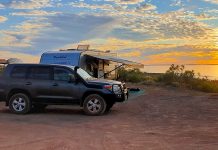Rest areas. Ultimately, they’re about ensuring everyone has somewhere to pull up safely to have a break from the rigours of the road, whether you’re towing a caravan or driving a car, motorhome or truck.
Truck drivers are the only motorists legally required to have breaks. They don’t have the luxury of heading into town to make use of a motel or a holiday park.
There are truck-only rest areas, but there are also rest areas that are available for all motorists, including truckies and caravanners. It’s in these rest areas where a bit of consideration towards each other’s needs is required.
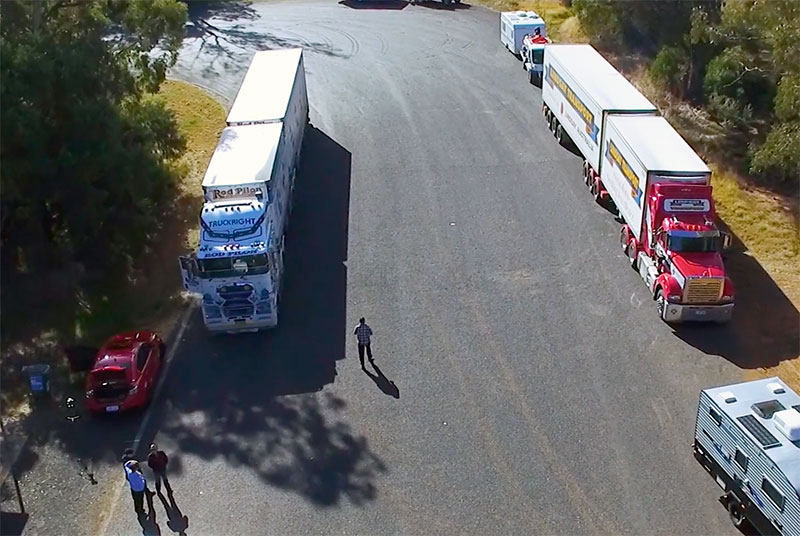
We spoke with truck driver Rod Hannifey, a well known and highly regarded ‘sharing the road’ advocate, about this issue.
“Our view is that generally a lot of vanners pull up late in the evening, look around and think, ‘Gee, look at all this room,’ and spread themselves out,” he said. “But at about midnight, 10 or 15 B-doubles are going to come in to have their required seven-hour break. But if caravanners have spread their vehicles out, making it tight for trucks to get in and out of the rest area, or it gets to the point where the truck driver has no choice but to drive on, he could be liable for a huge fine.”
More to the point, as Rod says, “We don’t want tired truck drivers on our roads. We don’t want tired caravanners on the road either. We are more than happy to share rest areas with you.”
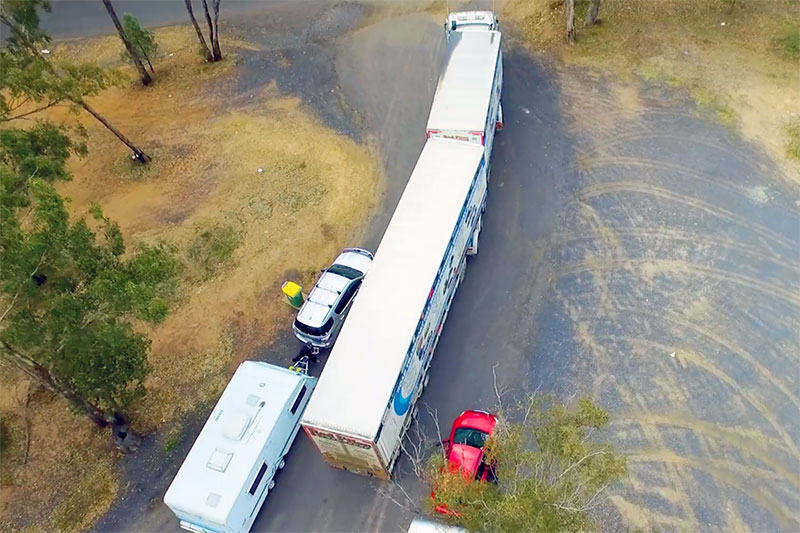
But if you’re towing a van, and you plan to use a rest area designed for both cars and trucks, the right thing to do is to park in such a way that won’t interfere with a truck’s ingress and egress, making sure to leave plenty of room for them to pull up for the night too. This might mean parking on the gravel verge, or perhaps backing into a slight clearing. It’s much easier for a caravanner to pull off such manoeuvres than for a truck driver at the wheel of a B-double.
CAR-ONLY REST AREAS
We’ve all used car-only rest areas during the day. They are a fantastic resource for motorists, especially caravanners who are at the wheel for hours at a time.
But as Rod Hannifey pointed out, truckies can’t use these car-only rest areas or the toilet facilities they usually contain. Further, many motorists opt not to use car-only rest areas during the night. Without other motorists around, they feel isolated and vulnerable.
“So all of the money that’s spent on these car rest areas is under-utilised. A lot of times trucks aren’t even allowed in them or can’t it in them. The result is, these motorists use truck rest areas or general-use rest areas instead, because they know truckies will come and go, they know someone will be there to keep an eye on them.
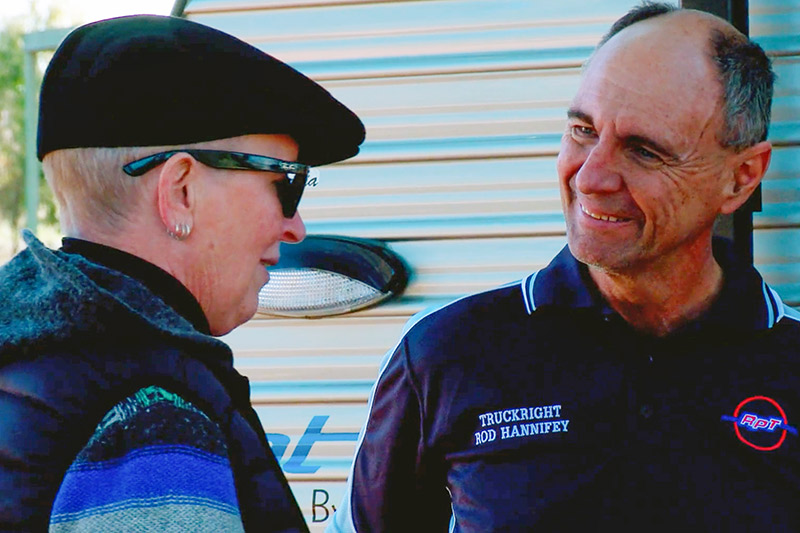
“So if you are a caravanner and decide to pull up early, consider that later that night there could be a dozen or more trucks coming in. Picture being out in western Queensland where we have triple road trains that are 53.5m long. The driver is tired, looking for somewhere to go to sleep, he pulls into a rest area to find all of these vehicles parked higgledy-piggledy – he would be lucky to get through, let alone pull up and go to bed.
“When we turn up, we might have an hour break or a seven-hour break. You won’t know that, but we do need those sites, we do need the capacity to get in and have a decent rest.
“If you pull up early, park out of the way, park to the edge, park well off if there is capacity to do that, and remember that some tired truckies are going to turn up later that night and need to have some decent sleep.
“There are truck-only rest areas, and they should only be used by trucks, but a general rest area is open for everybody. If you turn up to one, and you don’t consider other users, it could lead to tired caravanners and tired truck drivers, and surely none of us wants that.”
According to Rod, some years ago, a study revealed that Australia’s major highways did not provide the minimum number of rest areas to accommodate the needs of all motorists. Therefore, it is about exercising common courtesy when making use of the rest areas that we do have.
“If we better utilise the rest areas we have, we will have less-tired truck drivers and less-tired caravanners on the road, and surely that’s a road safety benefit for all.”
GREEN REFLECTOR MARKINGS
Have you ever driven along a highway in Queensland, New South Wales or Victoria and spotted green reflector markings on the side posts? What do they mean?
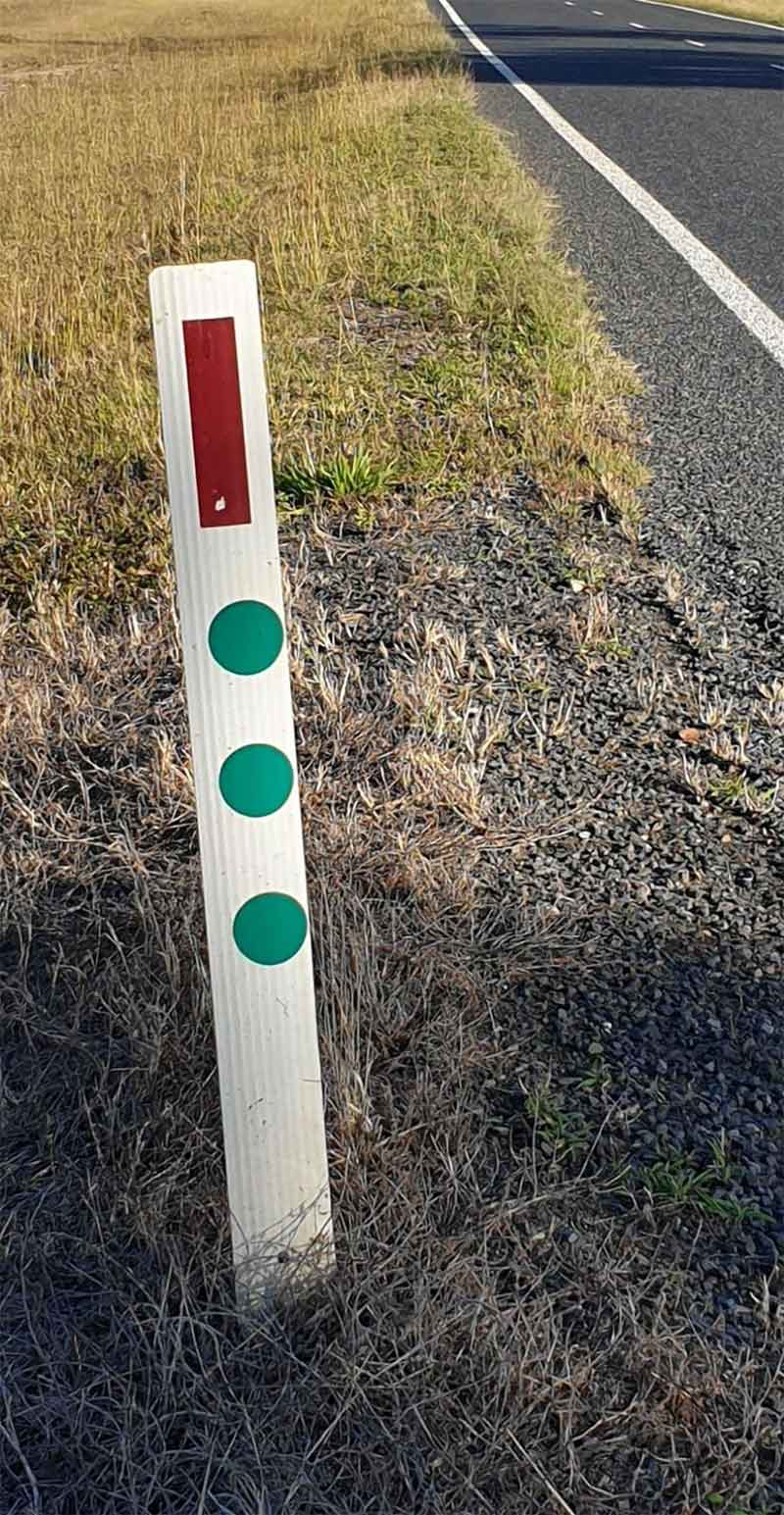
Well, these were an initiative of Rod Hannifey. It is a 3-2-1 system to indicate that up ahead is an informal place suitable for a truck driver to pull in for some rest. This system, and the informal parking bays that they indicate, are primarily intended for truckies; however, they aren’t intended for overnight stays.
“It is generally recognised that there are insufficient truck rest areas and insufficient money available to fix the problem. There are many informal spots used by truck drivers where there is either not enough capacity in current truck bays, or where the spacing, location and or lack of facilities, particularly shade in the daytime, sees trucks pulling up on wide road shoulders, etc., for legal breaks, load-checking and, of course, sleep,” he said.
As a caravanner, if you see these markings and decide to make use of the informal parking bay, you are welcome to do so; however, Rod – and truck drivers everywhere – would prefer that you made it a quick stop. Get out, have a quick stretch and walk around, and move on, so that the parking area is free should a truckie need it.
Many of the issues concerning road-sharing between truck drivers and caravanners can be solved by common courtesy and consideration. If you pull into a general-use rest area, ask yourself: “Am I parked in such a way that if a truckie pulls in, he/she will be able to also use the space?” After all, caravanners have multiple options for places to say. Truck drivers don’t, and they will be fined if they don’t take their mandated breaks from the road. Nobody wants fatigued motorists. Truck drivers have a job to do, and without them, we’d all be in trouble.
So don’t use truck-only rest areas. In general-use areas, park out of their way, and if you decide to use an informal parking bay indicated by those green reflectors, don’t stay long.
With thanks to Whiteline Digital Media. For informative video content about Australia’s road transport industry and issues concerning sharing the road with truckies, visit https://vimeo.com/whitelinetelevision



